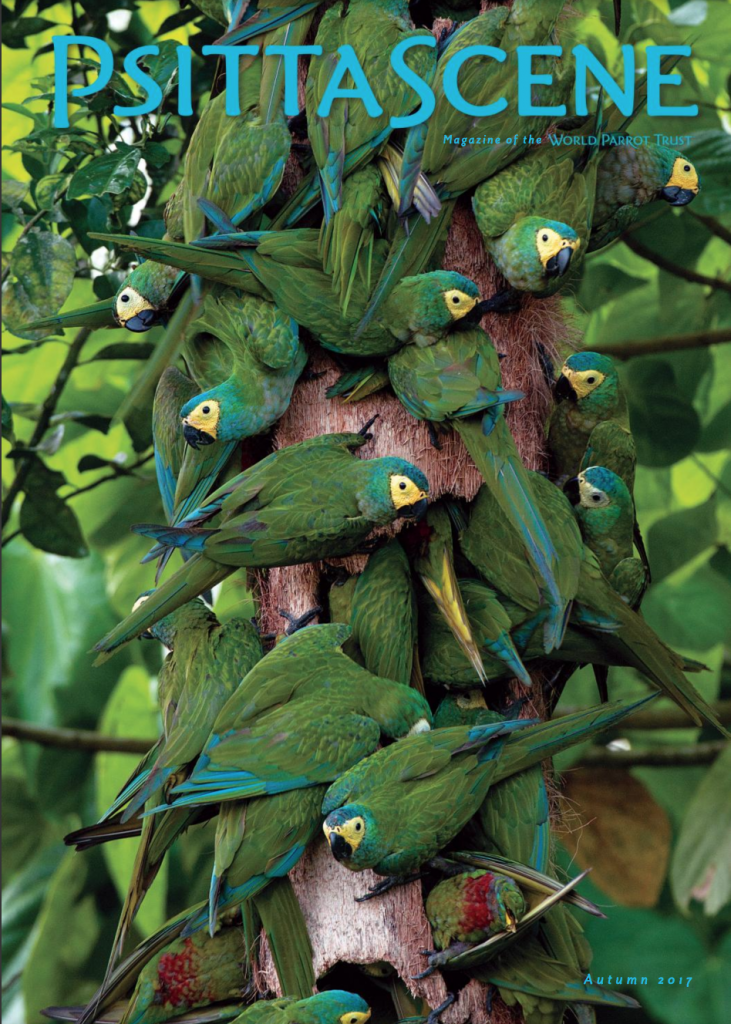
Zoonotic Diseases in Pet Birds

First, a word about the term “zoonotic” – zoonotic refers to those diseases that can be transmitted from animal to human or human to animal (the latter sometimes called reverse zoonosis).
While most zoonotic diseases in birds occur in poultry and wild birds a few, from time to time, may occur in pet parrots. Below is a list of some you should be concerned with.
Zoonotic Diseases
1. Psittacosis – also known as Chlamydiosis, and caused by Chlamydia psittaci. Organism is transmitted via feather dust and fecal material.
2. Samonellosis – caused by various Samonella spp. Bacteria is transmitted through feather and fecal dust, as well as through the egg.
3. Campylobacteriosis – caused by Campylobacter jejuni. This organism may live in the small intestines of clinically ill or normal birds.
4. Collibacilosis – caused by Escherichi coli bacteria. These bacteria are normally found in the intestinal tracts of all animals.
5. Newcastle disease – caused by Paramyxovirus. This virus is shed through oral and respiratory secretions, and in the feces.
6. Allergic alveolitis – also known as bird breeder’s lung. Alveolitis is caused by a hypersensitivity reaction to feather dander, dust and feces.
7. Mycobacteriosis (Avian TB) – caused by the bacteria Mycobacterium avium. This organism is spread by feces contaminated food and water.
While H5N1-strain avian influenza has been a concern over the last few years, nearly all of the cases of human infection have involved the poultry (chicken and turkey) industry. For more information, please see Wikipedia’s entry on H5N1.
Avoiding Trouble
Avoiding possible exposure to any of the above is relatively easy. Follow these simple steps to significantly reduce the risk:
1. Keep birds indoors (i.e. no contact with other pet or wild birds)
2. Have regular vet checks – and keep detailed records of any testing done on your birds
3. Keep high standards of hygiene in your house or aviary
4. Keep hands clean when in contact with your pets – before and after
5. Avoid feeding wild birds

6. Avoid visiting farms with poultry and other birds
7. Avoid swimming in lakes and ponds where wild birds are found
8. Avoid handling dead or sick wild birds if found
9. If handling and consuming poultry, use proper hygiene and cooking methods (i.e. thoroughly cook, properly store and practice cleanliness)

For the most part, the danger of transmission of disease from parrots to people is relatively low. However, certain risk groups such as the very young, the elderly and the immune compromised should take extra care. If reasonable measures are taken the chance of problems developing for you and your birds should be lessened.
Sources:
Balliere’s Comprehensive Veterinary Dictionary, Blood and Studdert, Balliere Tindall, 1988
Avian Medicine: Principles and Application abridged ed., Ritchie, Harrison and Harrison, abridged by Donald W. Zantop, DVM, Wingers Publishing Ltd. 1997
‘Avian Flu pt. 3: Ten easy steps to avoid bird flu for you and your birds’
http://www.parrots.org/pdfs/parrotnews/Avian_Flu_pt3.pdf, James Gilardi, Ph.D. PsittaScene Vol. 18, No. 1 February 2006
Article ‘Avian Diseases Transmittable to Humans’, Jacob, Gaskin, Wilson and Mather, University of Florida http://edis.ifas.ufl.edu/PS019, 1997.
Article ‘Zoonotic Diseases’ by Linda Pesek, DVM, Winged Wisdom Pet Bird Magazine http://www.birdsnways.com/wisdom/ww23eiii.htm, June 1998.
Wikipedia entry ‘zoonosis’ http://en.wikipedia.org/wiki/Zoonosis
© Copyright 2018 World Parrot Trust. All Rights Reserved.

